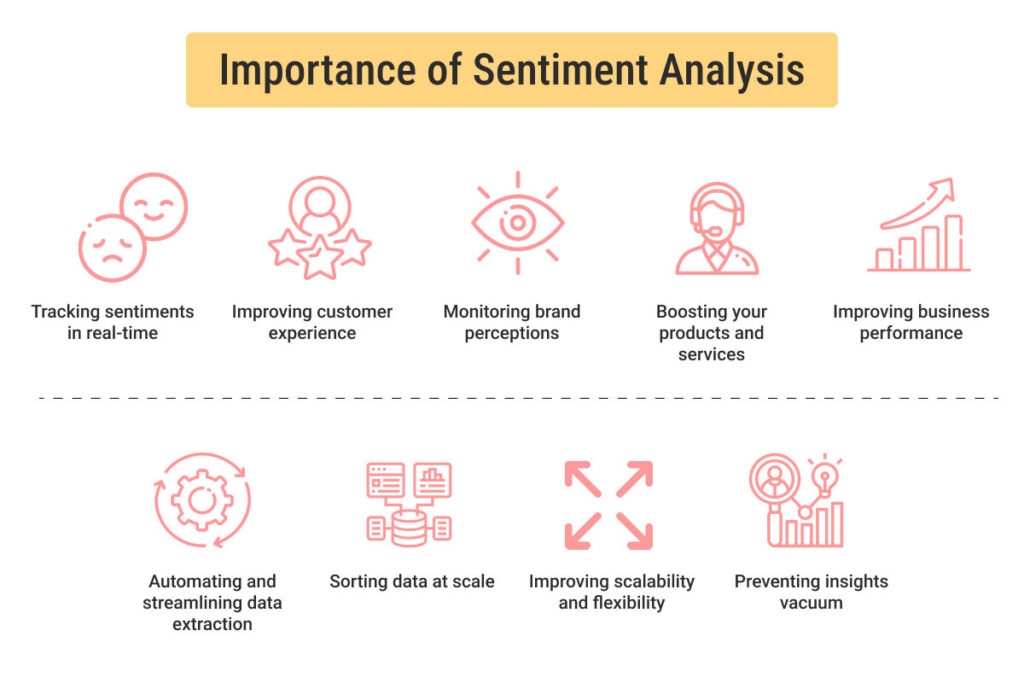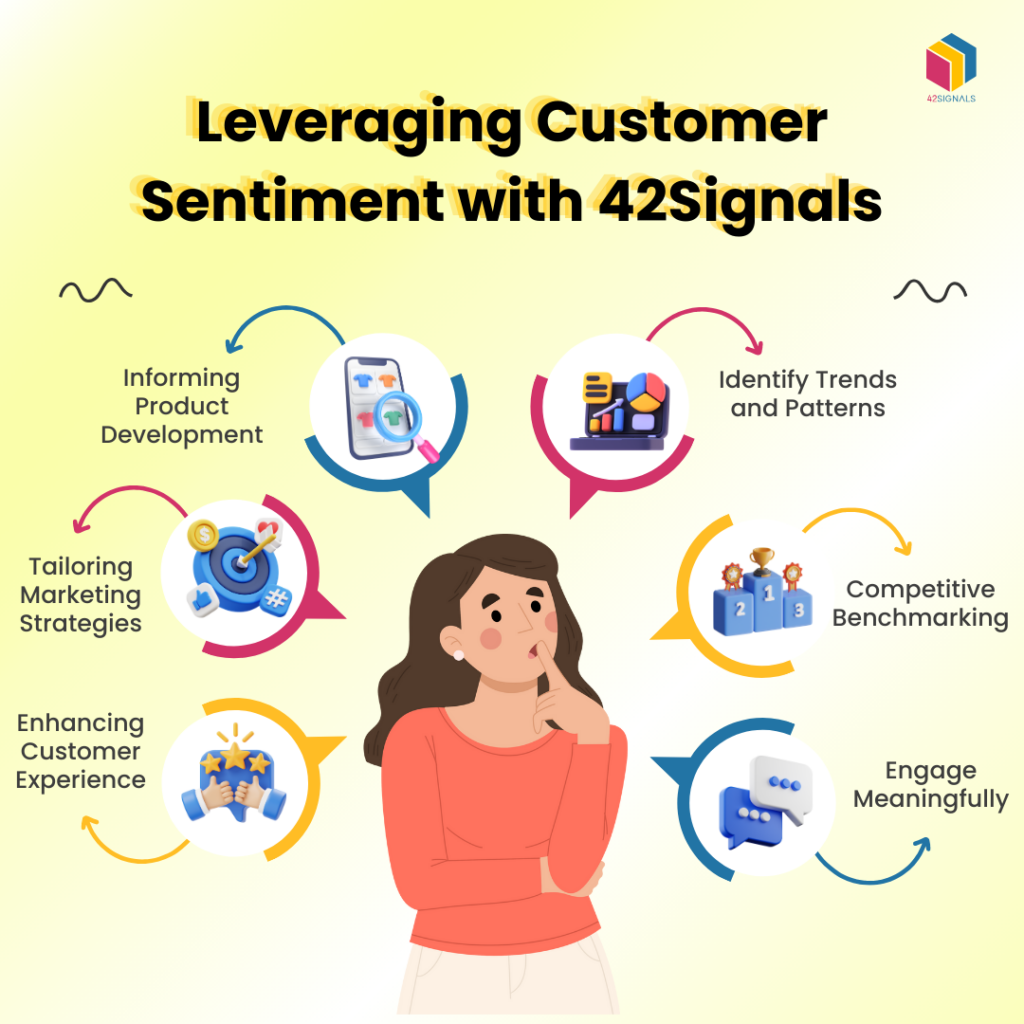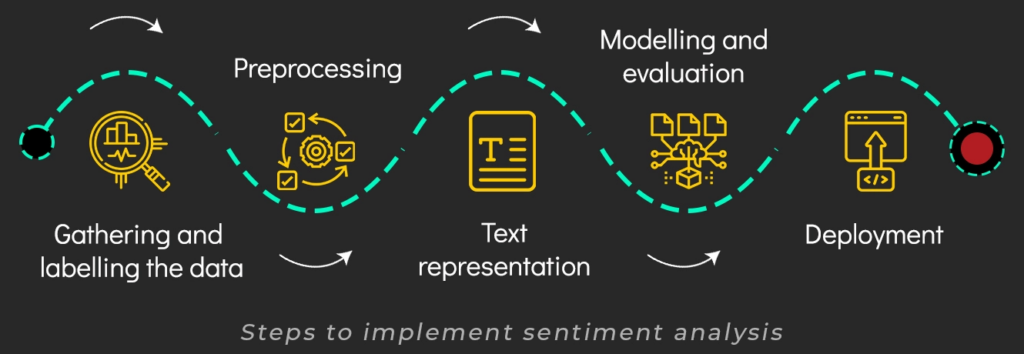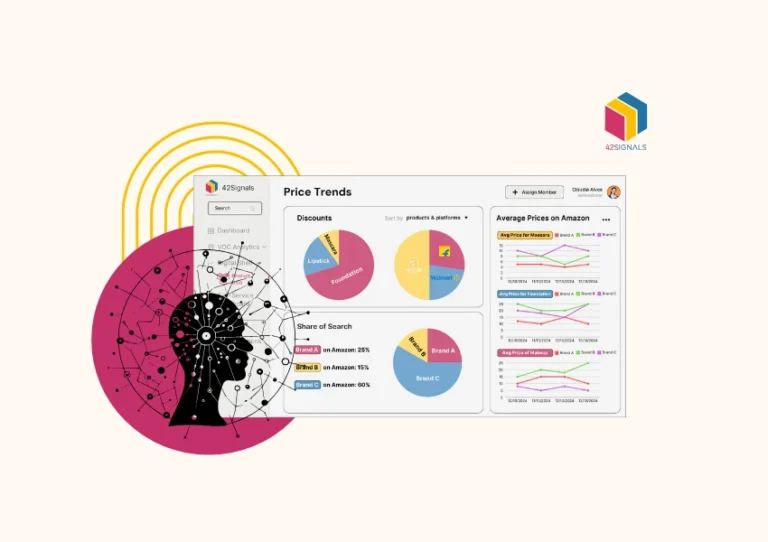Customers constantly share their opinions online. Be it reviews or UGC, understanding your customers’ sentiments has become crucial to building and maintaining a strong brand. Sentiment analysis allows businesses to track, analyze, and understand how consumers feel about their brand, products, and services. In this guide, we’ll dive deep into everything you need to know about sentiment analysis and how it can significantly benefit your brand’s success.
What Is Sentiment Analysis?

Sentiment analysis is the use of natural language processing (NLP), machine learning, and text analysis to identify and extract subjective information from text. It involves analyzing customer feedback, social media posts, online reviews, surveys, and more to determine how customers feel—whether their sentiments are positive, negative, or neutral.
At its core, sentiment analysis helps businesses gauge customer emotions and opinions, providing them with valuable insights that can drive strategic decisions.
How Sentiment Analysis Works?
Sentiment analysis typically involves several key components that allow brands to understand customer emotions:
- Natural Language Processing (NLP): NLP algorithms break down human language into manageable pieces and analyze words and phrases for emotional content.
- Text Classification: Machine learning models categorize text based on sentiment polarity—positive, negative, or neutral.
- Emotion Detection: Some advanced sentiment analysis tools also detect specific emotions like joy, sadness, anger, surprise, or fear, giving you a deeper understanding of customer attitudes.
- Data Aggregation: Sentiment analysis collects data from various sources—social media platforms, online reviews, customer surveys, and forums—to provide a comprehensive view of customer sentiment.
Why Sentiment Analysis Is Crucial for Brand Success?

Image Source: Needl
Building and Maintaining Brand Reputation
Brand reputation is often shaped by how customers feel about your products, services, and customer interactions. Positive sentiment can build trust and foster loyalty, while negative sentiment can harm a brand’s image, potentially leading to customer churn and a loss in market share. With sentiment analysis, businesses can monitor these sentiments in real time and take proactive steps to improve their reputation before it’s too late.
Enhancing Customer Experience
Sentiment analysis helps brands understand their customers’ needs and desires. By identifying customer pain points, businesses can create personalized experiences that improve satisfaction. This leads to more meaningful customer relationships and enhances the overall customer journey.
Strategic Decision Making
By continuously monitoring customer sentiment, brands can make data-driven decisions on product development, marketing strategies, and customer service improvements. Understanding how customers feel about your brand helps you adjust your strategies to align with consumer expectations.
How Customer Sentiment Shapes Winning Marketing Campaigns?
Crafting Campaigns That Resonate
Sentiment analysis helps brands create campaigns that speak directly to customer emotions. By analyzing how customers respond to existing marketing efforts, brands can adjust messaging, content, and design to maximize engagement and impact.
For example, if sentiment analysis reveals that a particular product feature generates excitement, brands can highlight it in their marketing campaigns. Alternatively, negative sentiment can inform brands to address issues, ensuring future campaigns are more effective.
Identifying Opportunities for Innovation
Sentiment analysis provides insights into what customers love and dislike about products, services, and experiences. With this information, brands can identify gaps in the market and innovate to meet customer needs. If customers are dissatisfied with a particular feature, this becomes an opportunity to improve it or offer a new solution.
What Are The Benefits of Sentiment Analysis?

Image Source: appinventiv
1. Early Detection of Issues and Crisis Management
Sentiment analysis tools can track online mentions of your brand, allowing you to identify negative sentiments quickly and address issues before they escalate. This early detection can prevent a small problem from turning into a public relations crisis, protecting your brand reputation.
For example, when a major airline faced backlash after a customer service incident went viral, sentiment analysis tools could have identified the rising negative sentiment in real-time, enabling the company to react quickly and avoid a full-blown crisis.
2. Customer Retention and Loyalty
Understanding how customers feel about your brand and its offerings helps you address their concerns promptly. By analyzing sentiment, brands can make changes to improve customer satisfaction and build long-term loyalty. Engaged and happy customers are more likely to stay with your brand, return for repeat purchases, and recommend it to others.
3. Competitive Advantage
Sentiment analysis not only helps you understand your own customers but also allows you to monitor how consumers feel about your competitors. By comparing sentiment data, brands can uncover market trends, identify competitor strengths and weaknesses, and adapt their own strategies to stay competitive.
How to Use Sentiment Analysis for Consumer Sentiment Index Tracking?
A consumer sentiment index is a tool that brands use to measure the overall mood of their target market. By analyzing customer sentiment over time, brands can gauge how their audience feels about their products, services, and industry trends. Using sentiment analysis, you can create a consumer sentiment index that helps you:
- Track Market Trends: Understanding the overall sentiment of your customer base allows you to predict trends in demand, identify emerging opportunities, and stay ahead of competitors.
- Measure Brand Health: Regular sentiment tracking helps measure your brand’s health over time, indicating whether your efforts are improving customer satisfaction or if you need to pivot your strategy.
Different Types of Sentiment Analysis and Their Uses
There are various types of sentiment analysis depending on the depth and specificity of your goals:
1. Fine-Grained Sentiment Analysis
This approach classifies sentiments into three categories—positive, negative, and neutral. It provides a high-level overview of customer opinion but may not offer much detail.
2. Emotion Tracking
Advanced sentiment analysis tools go beyond basic sentiment classification and track specific emotions, such as joy, anger, sadness, or surprise. This allows brands to tailor their response to the precise emotions of their customers.
3. Aspect-Based Sentiment Analysis
This method allows brands to examine customer feedback about specific aspects of a product or service, such as price, quality, or customer service. This provides a more nuanced understanding of customer sentiment and helps brands target particular areas for improvement.
The Role of Sentiment Analysis in Social Media Analytics
Real-Time Social Media Monitoring
Social media is a powerful tool for sentiment analysis. Platforms like Twitter, Facebook, and Instagram are prime sources of customer feedback. With sentiment analysis, brands can track mentions of their products or services in real time, allowing them to respond to both positive and negative feedback swiftly.
Trendspotting on Social Media
Sentiment analysis also helps brands identify emerging trends by analyzing social media conversations. By understanding the mood surrounding certain topics, businesses can anticipate shifts in consumer behavior and adjust their marketing strategies accordingly.
Real-World Examples of Brands Using Sentiment Analysis
1. Nike’s Social Media Monitoring
Nike uses sentiment analysis to monitor social media platforms for customer feedback and brand mentions. This allows them to identify trends, track the success of marketing campaigns, and react to customer concerns in real-time. By understanding the sentiment around their campaigns, they can optimize content and deliver more personalized experiences to their audience.
2. Starbucks’ Customer Service Improvements
Starbucks utilizes sentiment analysis to monitor customer feedback from surveys and social media. When a customer expresses dissatisfaction, Starbucks can respond quickly and resolve the issue. By analyzing sentiment data, they’ve been able to improve their customer service and maintain a loyal customer base.
3. Amazon’s Product Development

Image Source: AWS
Amazon uses sentiment analysis to gather insights about customer reviews and product feedback. By understanding which features of their products are most liked or disliked, they are able to make informed decisions about product development and improvements.
How Sentiment Analysis Gives You the Edge Over Competitors?

Sentiment analysis provides invaluable insights not only into how consumers feel about your own products and services but also about your competitors. Here’s how sentiment analysis can help you stay ahead of the competition:
1. Monitoring Competitor Sentiment
By using sentiment analysis tools to monitor competitor mentions across social media, review platforms, blogs, and forums, you can gain real-time insights into how customers perceive their products and services. This data helps you assess the strengths and weaknesses of your competitors and uncover opportunities for your own brand to capitalize on.
For example, if you notice a competitor is receiving negative sentiment about the quality of their customer service, you can highlight the superior aspects of your own customer service in your marketing campaigns, offering a more attractive alternative to potential customers.
2. Analyzing Competitor Product Launches
Sentiment analysis tools can track the reception of new product launches by analyzing social media mentions, customer reviews, and other digital conversations. This allows you to gauge customer reactions to competitors’ offerings, identify features that consumers like or dislike, and determine how your products compare.
If your competitor’s product is receiving positive sentiment, you can use this information to refine your own product development and marketing strategies. Conversely, if a competitor faces negative feedback, you can quickly position your own product as a better solution.
3. Identifying Emerging Trends Early
By monitoring sentiment around competitors, you can uncover emerging market trends before they become widespread. If you notice a shift in customer sentiment towards a specific product feature or industry trend that a competitor is capitalizing on, you can act quickly to adapt your offerings and stay relevant. Sentiment analysis provides an early warning system for your business to pivot and innovate in response to shifting consumer preferences.
For instance, if a competitor is gaining positive attention for their sustainability initiatives, you can implement or highlight your own eco-friendly practices and products to attract environmentally-conscious consumers.
4. Competitive Benchmarking
Sentiment analysis also allows for detailed competitor benchmarking. By comparing the sentiment surrounding your brand to that of your competitors, you can gain insights into where you stand in the market and identify areas for improvement. Are consumers more excited about your product than your competitors’? Are there aspects of your customer experience that need improvement?
This data provides a clear, objective measure of where your brand stands in relation to the competition, helping you identify key areas of strength to emphasize and weaknesses to address.
5. Gaining Insights into Competitor Marketing Strategies
Sentiment analysis tools can track the reception of marketing campaigns launched by your competitors. By analyzing customer feedback, sentiment around these campaigns, and consumer engagement, you can assess whether a competitor’s marketing efforts are resonating with the target audience.
If a competitor’s campaign receives positive sentiment, it’s an opportunity for you to learn from their success and adapt your own marketing strategy accordingly. If their campaign generates negative sentiment, it’s a chance for you to avoid similar mistakes and position your brand more effectively.
6. Improving Brand Positioning
In a crowded market, distinguishing your brand from competitors is key. Sentiment analysis allows you to understand how customers perceive your brand compared to others. By analyzing sentiment data, you can identify what makes your brand unique, and craft messaging that emphasizes these differentiators.
For example, if consumers perceive your brand as more trustworthy, innovative, or customer-friendly than your competitors, you can leverage these positive sentiments in your brand positioning to attract more customers and strengthen your competitive edge.
Top Challenges in Sentiment Analysis and Solutions

Image Source: Transcom
While sentiment analysis is an invaluable tool, there are some challenges brands need to be aware of:
- Context and Nuance: Sentiment analysis tools may struggle with understanding the full context of a statement, especially in cases of sarcasm or irony.
- Multilingual Sentiment Analysis: Analyzing sentiment in multiple languages can be complex, requiring tools that can effectively process diverse linguistic expressions.
- Data Overload: Collecting vast amounts of data from various sources can lead to information overload, making it challenging to derive actionable insights.
- Accuracy Issues: Not all sentiment analysis tools are perfect. False positives or misinterpretations of emotions can occur, requiring continuous monitoring and refinement of the tool.
Best Practices for Implementing Sentiment Analysis

Image Source: Nitor
1. Set Clear Objectives
Before diving into sentiment analysis, establish clear business goals. Whether you’re focused on improving customer service, tracking campaign performance, or measuring brand health, having a clear objective will help guide your sentiment analysis efforts.
2. Use Multiple Data Sources
For a comprehensive view of customer sentiment, it’s essential to gather data from multiple sources, including social media, online reviews, surveys, and customer support channels. This will ensure that you capture a broad range of opinions.
3. Continuously Improve Your Sentiment Models
Sentiment analysis models need to be regularly updated and trained to improve their accuracy. As language evolves and new slang terms emerge, your models should adapt to keep up with these changes.
Future Trends in Sentiment Analysis for Brands
As sentiment analysis continues to evolve, brands will have even more opportunities to refine their marketing strategies and improve customer satisfaction. Emerging technologies like deep learning and Artificial Intelligence are enhancing sentiment analysis capabilities, allowing for more accurate emotion detection and trend prediction.
In the near future, sentiment analysis could play an even more significant role in shaping brand strategies, helping brands not only react to customer feedback but also predict future trends and customer behaviors.
Conclusion
Sentiment analysis is more than just a tool for understanding customer emotions—it’s a powerful strategic asset that can shape your brand’s reputation, improve customer satisfaction, and drive business success. By implementing sentiment analysis into your brand strategy, you can stay ahead of market trends, optimize customer experiences, and build a loyal customer base that feels heard and valued.With tools like 42Signals, brands can effortlessly analyze customer sentiment and make data-driven decisions that positively impact their bottom line. By listening to your customers and responding to their emotions, you can foster deeper connections and unlock new opportunities for growth. Schedule a demo today!





